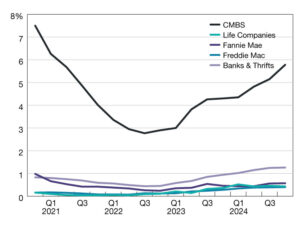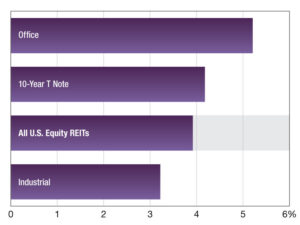Considering a Sale-Leaseback? Get Real About Value


In the world of commercial real estate, sale-leaseback transactions have become an increasingly popular financial strategy as interest rates have risen significantly from their post pandemic lows in December 2021. Unlocking the capital within corporate real estate facilities provides an excellent alternative to traditional debt financing.
When it comes to evaluating a commercial building, it’s not as straightforward as it might seem. Before embarking on a sale-leaseback transaction, it’s important to understand the true value of the commercial property in question. The process involves more than just determining the sale price—it requires a comprehensive analysis of multiple factors to ensure the business maximizing the value of the asset.
Sale-leasebacks offer numerous benefits, such as improved cash flow, debt reduction, and balance sheet improvement. For businesses, it provides liquidity that can be reinvested into operations, expansion, or paying down debt. But to achieve these benefits, accurately assessing the value of the building is paramount.
READ ALSO: Industrial’s Uneven Playing Field
Location and market conditions
As with any real estate transaction, location is a key determinant of value. A property in a prime business district or pro-business community will receive higher consideration from investors. However, broader market conditions also play a significant role. In a strong real estate market and a favorable interest rate environment, sale prices may be higher. Whereas in a downturn, the seller might not get the same premium. Analyzing current and future trends is essential in understanding the true valuation of the property.
The economic health of the region and the broader market trends play a substantial role in property valuation. If the area is experiencing economic growth, with businesses expanding and the population increasing, the commercial building’s value is likely to rise. Conversely, if there’s an economic downturn, or if major employers move out of the area, the value might decline.
Perceptions of how pro-business a local and state government is can also potentially affect an investors’ decision to pursue a transaction.
Condition, maintenance & functional obsolescence
The physical condition of the building will significantly impact its value. Properties that are well-maintained, with up-to-date systems, infrastructure and maintenance records are more appealing to potential buyers. Before considering a sale-leaseback, ensure the building is in good operating condition with complete repair and maintenance records for the mechanical systems.
Conducting a thorough inspection and addressing any necessary repairs or upgrades will boost the property’s value. Making minor cosmetic improvements can also enhance valuations. As a rule of thumb, any improvements being made to boost the properties valuation should increase the properties valuation $5-$7 for every dollar spent.
Perception becomes reality: If an investor sees that the facilities exterior and common areas aren’t being properly maintained, their likely asking themselves what kind of condition are the things we don’t see in.
Financial performance and cash flow
The financial terms, both the rental rate and the lease term, will have the most direct effect on the valuation and sale price of the facility. Long-term leases with favorable terms for the new owner are most attractive and will command higher valuations.
The financial performance of the property, the cash flow it generates, is a critical factor in valuation. Potential buyers will closely examine the properties and the tenant’s ability to generate consistent rental income. The creditworthiness of the tenant and the stability of the company’s cash flow is the most critical component of the property’s valuation. A stable, financially sound tenant with a strong business track record makes the property more valuable to investors. Being able to demonstrate a history of stability and consistency will maximize the property’s valuation.
Future development potential
Any potential for future development or repurposing of the property can also add value. Investors are often interested in properties that offer opportunities for expansion or redevelopment. Assessing and highlighting any potential redevelopment opportunities can enhance its attractiveness and valuation.
Sales comparable approach to value
Benchmarking the property’s value against similar properties, both geographically and square footage, that have recently sold in the market is a fundamental step in determining a property’s value. Comparable sales provide a range of value an investor is likely willing to pay for the asset. Developing a true competitive set of accurate comps, in terms of location, size, and building condition, should be undertaken by a CRE professional with access to the proper tools and information.
Long-term potential risks
While sale-leasebacks offer numerous benefits, they also come with risks. Tenants have less control over buildings they occupy and if the facility is owned debt free, rental payments become a fixed operating expense. Consideration should also be given to who will be responsible for the cost of capital improvements such as the potential replacement of mechanical systems, roof or parking lots over the term of the lease.
It’s essential to weigh these factors carefully and consider how they fit into the business’s overall strategy. Sale-leasebacks are a highly effective financial strategy, but the key to maximizing their benefits lies in accurately assessing the realistic value of a commercial building. Determining the value of a commercial building is a complex process.
It’s not just about bricks and mortar but also about the location, the economic climate, the condition of the building, and the stability of the tenant’s cash flow. A thorough and strategic approach in underwriting the property will not only help uncover the true valuation of the asset but also position the property for a smooth and successful transaction process.
Daniel Levison is principal broker & CEO for Commercial Property Consultants.
The post Considering a Sale-Leaseback? Get Real About Value appeared first on Commercial Property Executive.




